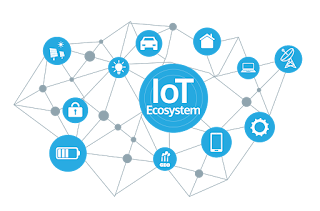Business
setups have become complex. The requirements, threats solutions, and execution now face variables that were not
in the picture a couple of decades ago. So, it does not come as a shock that
the means to tackle them have become more intricate as well. Project management
has evolved. It has evolved to an extent where it no longer can be visualized
as a single set process but has branched out and is becoming more complex by
the hour.
While you
might have witnessed the subtle shift as an experienced professional in project
management or might have been born into the changing dynamics as a fresher
starting his career, it is important to identify and acknowledge the trend
shift. In this article, we will identify a couple of changing trends in Project
Management spectrum and discuss what you can do in order to stay tuned with
these shifts.
- Expanding Automation and engagement of Artificial Intelligence
With the
increase in the number of variables, it becomes difficult to monitor all of
them on a regular basis. Owing to this, Automation is being used extensively to
monitor these variables and AI is being used to deduce appropriate actions. Use
of AI and machine learning basically helps you free up space for you to attend
to other important aspects of projects. In the current scenario, automation is radially taking up small tasks like setting
up alerts for business meetings, sending an initial response based on multiple
triggers like a greeting message to a new client visiting your website for the
first time. While automation is taking off small tasks from your plate AI is
gaining momentum is improving the responses. For example, in digital products
and services spectrum, AI algorithms are being used to tailor companies’
products and services in real time to suit the needs of the customers. AI also
has the potential of assisting in the prioritization
of tasks and allocation of resources. AI bots are now capable of running the
simulations and delivering optimized scheduling and allocation of recourses in
real time, adding to the adaptability of processes.
Another
area, where automation and machine learning is finding utility, is the collection of data and data analysis. AI
research teams are developing machine learning systems capable of augmenting a
project manager’s decision-making ability based on the observations of other
projects. All of these makes Automation, AI and machine learning key players in
project management spectrum in the coming years.
What do you need to do?
Acceptance
is the initial step. Use of these tools can help you clear out space for you to indulge in more human-powered
relationships with your team and clients. You can start small with your emails.
You can sort your inbox based on multiple
filters that will keep emails from your clients and employees separate and
offer much better inbox management. While this was a very small example, you
can also:
1. Automate
scheduling, resource allocation and invoicing through various project
management tools.
2. Identify
bottlenecks and eliminate them. You can allocate AI to monitor the process and identify bottlenecks.
2. The advent of
the hybrid approach
Agile is no
longer a new concept. It is being used extensively in various organizations. The waterfall approach is being alienated from
a lot of areas. However, both agile, waterfall along with other methodologies
might not produce the best result individually. The Hybrid Approach has shown
great prospects and organizations are drifting towards a combination of these
methodologies during the lifecycle of a
project. However, the application of these methods in an optimal way remains tricky.
What do you need to do?
It would be
beneficial to be updated with the new methodologies. If you want to use various
methodologies, you need to know them properly and need to develop the skills to
identify the best methodology in a given scenario.
3. The growing
need for Managers with High Emotional
quotient
While AI
and Machine learning have the potential
of sharing your workload, they do lace in
the aspect of providing the human touch. Several activities like building team
dynamics, coordination, initiating learning within teams require a high level of involvement from the project
managers and a high degree of understanding between individuals that can be
achieved by managers with a high degree
of emotional quotient. Every team requires an empathetic listener, a tactful
negotiator and a motivational leader at some point or the other.
What do you need to do?
Developing
people skills become of prime importance if you want to transform into a
successful manager or leader. Educate yourself on the roles of EM in project
management. While it is important to respect the emotions of others, recognizing your own emotions is important as
well.
4. Increasing engagement of IoT
 IoT is
basically a global connection of devices that can access the internet and communicate with one another and
other things. With the explosion of
digital infrastructure, IoT has intermingled with project management in every
aspect from the collection of data to the
collaboration of teams. IoT can greatly
reduce the human intervention and thus cost of function as they can analyze and
respond to their environment. For
example, in a production project, various IoT devices can be installed into the
various production units to monitor the need for
maintenance. In such a case, the project
manager can eliminate the need for regular and manual inspections and can get a
notification in advance.
IoT is
basically a global connection of devices that can access the internet and communicate with one another and
other things. With the explosion of
digital infrastructure, IoT has intermingled with project management in every
aspect from the collection of data to the
collaboration of teams. IoT can greatly
reduce the human intervention and thus cost of function as they can analyze and
respond to their environment. For
example, in a production project, various IoT devices can be installed into the
various production units to monitor the need for
maintenance. In such a case, the project
manager can eliminate the need for regular and manual inspections and can get a
notification in advance.
What do you need to do?
As a
project manager, you will have to find ways to optimize the use of IoT in your
existing system. You can use it extensively for monitoring and gathering real-time data.
5. The increasing
importance of gathering data and executing prime analysis
 Most of the
project management and quality assurance methodologies make extensive use of
data. We now have the option of gathering extensive and accurate data. But data
without the means of analyzing the data and producing sustainable action items are not of much value. As a result,
organizations are paying extensive importance to data analytics. The
profitability is now being directly linked to how effectively the data can be
transformed into suitable action steps.
Most of the
project management and quality assurance methodologies make extensive use of
data. We now have the option of gathering extensive and accurate data. But data
without the means of analyzing the data and producing sustainable action items are not of much value. As a result,
organizations are paying extensive importance to data analytics. The
profitability is now being directly linked to how effectively the data can be
transformed into suitable action steps.
What do you need to do?
A
direct requirement of this scenario is that the Project manager will have to
directly step into data analysis. You will have to learn to incorporate data
analysis into your process and stay up-to-date with the tools for data
visualization and analysis. You will also have to use (and choose) data in ways
that effectively present risks, progress, and results to stakeholders.
Project
management often changes the way
organizations operate. Having an efficient project manager can make all the
difference in the execution of the project. If you are a professional working
in project management spectrum, you need to keep working to maintain your
competitive edge. If you are a fresher with the desire to build a career in
project management, structured learning can help you acquire multiple skillsets
necessary for success. Certification Planner can assist you no matter which
group you belong to. An easy method of achieving both these objectives is by
taking up certification courses. While the CAPMhttps://www.certificationplanner.com/APM/Certified-Associate-in-Project-Management-(CAPM)/ICT/Albany/10/1/1 certification training offered by
Certification Planner can help you build the basics that you need to know
before while starting your career in project management, certifications like PMP, PMI-ACP, CSM, and PgMP can help you validate your knowledge in
project management and identify the latest advancements in the domain. All our
courses are designed by certified instructors with over 15 years of industry
experience. With CP’s certification courses, you also get access to
complimentary study material, practice tests based out of actual examination,
application assistance and a 100% pass guarantee. You can visit our website www.certificationplanner.com or drop an email at support@certificationplanner.com. You can also speak to our training
experts directly at +1 4084185586. Happy Learning!




Comments
Post a Comment